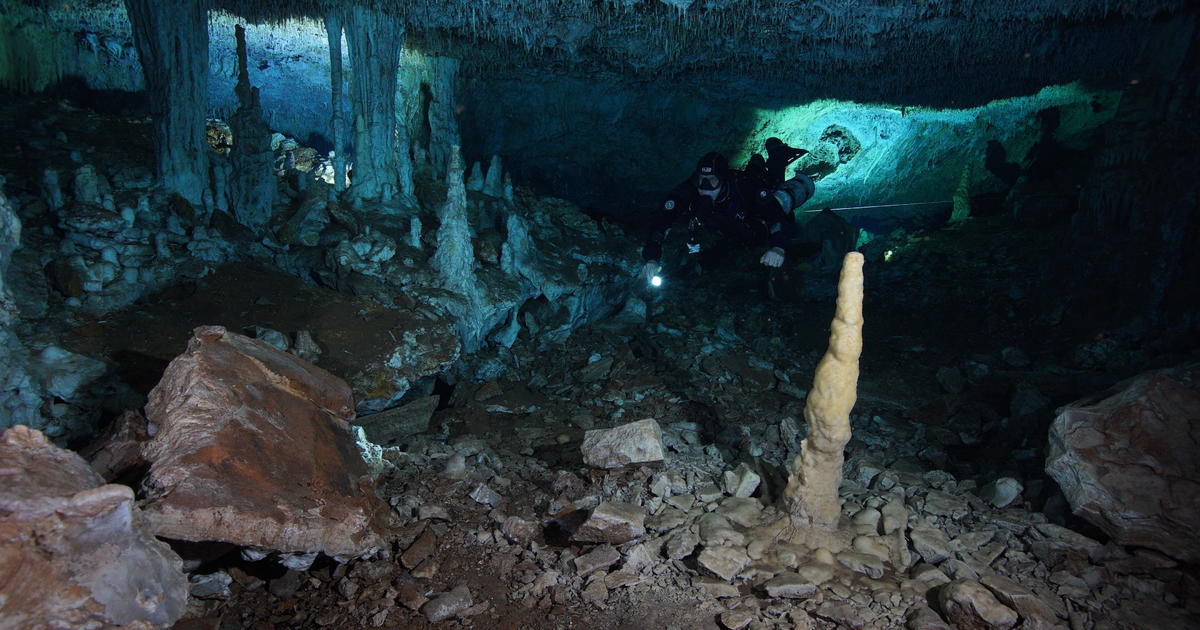
Experts and divers in the Yucatan peninsula in Mexico have found ocher mines that are some of the oldest on the continent. Ancient skeletons were found in the narrow, twisted mazes of the now submerged sink caves.
Since the skeleton remains as “Naia,“A young woman who died 13,000 years ago was found in the past 15 years, archaeologists have wondered how they ended up in the caves then dry. Approximately 8,000 years ago, rising sea levels flooded the caves, known as cenotes, around the Caribbean coast of Tulum.
Had these first inhabitants fallen, or had they intentionally come down seeking refuge, food or water? Nine sets of human skeletal remains have been found in the underwater caves, the passages of which may be barely large enough to traverse them.
Recent discoveries of some 900 meters of ocher mines suggest that they may have had a more powerful attraction. The discovery of remnants of human-caused fires, piled up mining debris, simple stone tools, navigational aids, and excavation sites suggest that humans entered the caves about 10,000 to 12,000 years ago, searching for iron-rich red ocher, that the first peoples of the Americas appreciated for decoration and rituals.
Such pigments were used in cave paintings, rock art, burials, and other structures among the earliest peoples around the world.
The first miners apparently brought torches or firewood to light their work, and broke pieces of stalagmites to hit the ocher. They left smoke marks on the ceiling of the caves that are still visible today.
“While Naia contributed to an understanding of the ancestry, growth, and development of these early Americans, little was known about why she and her contemporaries risked entering the cave maze,” researchers at the System Research Center wrote. of Quintana Roo Aquifers, known as CINDAQ by its Spanish initials.
The research was published Friday in the journal Science Advances.
“There had been speculation about what would have taken them to such complex and dangerous places to navigate, such as temporary shelter, fresh water or burial of human remains, but none of the previous speculations was well supported by archaeological evidence,” they said. wrote
“Now, for the first time, we know why people of this time would take the enormous risk and effort to explore these treacherous caves,” said CINDAQ founder Sam Meacham. At least one reason, Meacham said, was to prospect and mine the ocher red.
/ AP
Roberto Junco Sánchez, head of underwater archeology at the National Institute of Anthropology and History of Mexico, said the discovery means that the caves were altered by humans at an early date. The first miners may have removed tons of ocher, which, when ground into a paste, can be used to dye hair, skin, rock, or fur in different shades of red.
“We now know that ancient humans did not run the risk of entering this cave maze just to get water or flee from predators, they also entered mine,” said Junco Sánchez.
However, James Chatters, a forensic anthropologist, archeologist, and paleontologist at Applied Paleoscience, a consulting firm in Bothell, Washington, noted that none of the pre-Mayan human remains in the caves were found directly in the mining areas.
Dr. Spencer Pelton, a professor at the University of Wyoming and a state archeologist, has excavated a slightly older ocher mine at the Powars II site near Hartville, Wyoming.
Pelton agreed that among the earliest inhabitants of the Americas, ocher had an especially powerful attraction.
Red ocher mining “seems especially important during the first period of human colonization … you find it in tools, flats, hunting sites,” Pelton said. “It is a substance of great power … everyone likes bright red things.”
“It gives them a reason” to go to the caves, Pelton said, adding: “Considering the massive scale of this mining, it is the first thing I would do.”
The caves provide a well-preserved environment and it is where one of the oldest sets of human remains found in America was discovered in 2007, a young woman named “Naia”.
Chatters said Naia “probably died from a 30-meter fall from the dark cave tunnel” on the floor of a chamber below.
.
